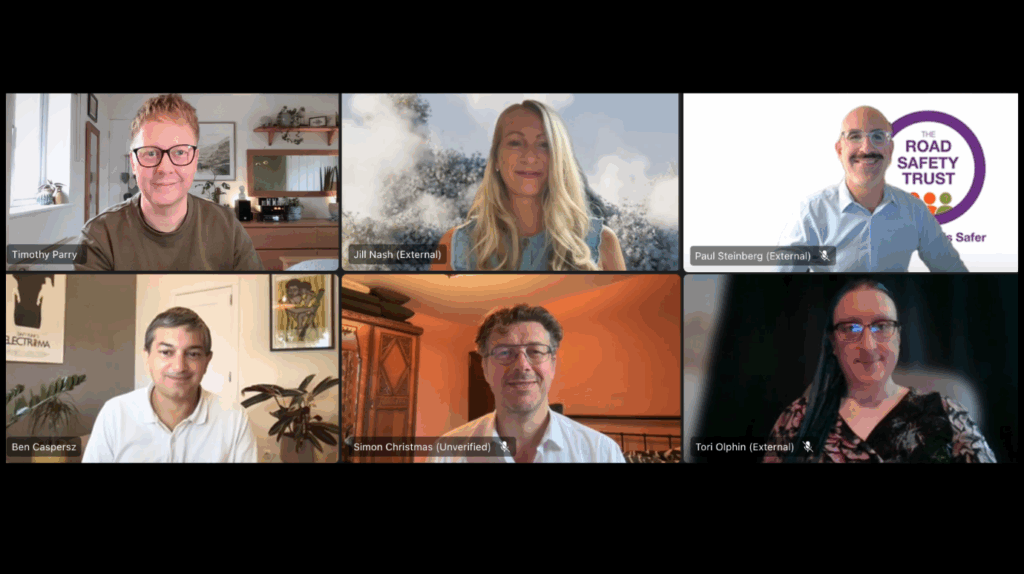Safety: is it a public health thing?

In the latest in our series of behaviour change webinars we invited experts from across academia, behavioural science, communications and public sector safety to explore if, and how, public health thinking might transform how safety challenges are approached.
Following some context by event Chair and Claremont Director Timothy Parry, Senior Consultant Mikaela Green introduced our new simple and practical framework, SAFER, for applying public health principles to safety strategies.
S – System-wide approach
A – Address root causes
F – Form partnerships
E – Evidence and evaluation
R – Representation
Using case studies, Mikaela showed SAFER in action across campaigns and interventions from Claremont and elsewhere tackling challenges from motorcyclist safety and youth violence prevention to water safety and fire risk, and beyond. She emphasised that while safety campaigns often focus on personal responsibility, public health could teach us to think bigger and redesign the environments and structures that influence behaviour.
The session moved to a panel discussion and Tim asked panellists each to reflect on the SAFER framework, and more widely on the benefits of public health thinking in response to safety challenges. Each selected a letter, or two, from the framework and shared insights, leaning into their personal research and practice experience:
S – System-wide Approach
Dr Simon Christmas, a social researcher and behaviour change consultant, argued that how people feel about risk is itself a structural factor. If they feel excluded, unsafe, or unheard, behaviour is unlikely to change. He linked this to system-wide approaches, suggesting we must understand how different groups experience the systems we build to design better ones.
A – Address Root Causes
Paul Steinberg, Director of Communications at the Road Safety Trust, brought a clear message: “Go upstream. Build safe systems. Use the full weight of public health thinking to challenge how we save lives on our roads.” Drawing from his previous HIV prevention work, Paul explained that successful campaigns addressed stigma, access and culture, not just behaviour. He highlighted the “Safe System” approach in road safety—which accepts human error and designs environments to help prevent those errors from becoming fatal.
F – Forming a Better Professional Community
Ben Caspersz, Claremont’s founder, drew attention to the lack of cohesion in the safety field itself. He called on practitioners to take a cue from public health – to build a stronger professional community, establish shared goals, and collaborate beyond institutional silos.
F & E – Form Partnerships and Evidence/Evaluation
Dr Jill Nash, academic at Bournemouth University, called for more joined-up data sharing between sectors. She noted the lack of a national, cross-sector safety strategy can lead to siloed data, limiting our ability to detect patterns or understand ‘near miss’ events. Jill’s emphasis on partnerships for better evaluation urged safety leaders to think collectively.
E – Evidence and Evaluation
Dr Tori Olphin MBE, behavioural science lead across social and criminal justice, reinforced the need for better evaluation: “You wouldn’t give your child an untested drug. But we often throw money at untested safety interventions.” Tori championed testing and experimentation—not just to prove effectiveness, but to avoid spending on what doesn’t work.
As the conversation moved beyond the SAFER model, themes of collaboration, curiosity and courage emerged. Whether it was embracing evaluation without fear of failure, rejecting one-size-fits-all messaging in favour of meaningful representation, or bridging gaps between health, enforcement and policy – the path to safer communities needs to be more inclusive. In addressing the question framing the event, the panel reinforced that public health has not only lessons but a legacy too to offer the safety world and applying these principles could help in shaping lasting impact.
A huge thank you to our speakers and panellists for sharing their expertise, as well as to our attendees for their engaging questions. If you missed the live session or would like to revisit the insights shared, the full webinar recording is now available to view here:
To find out more or discuss how to apply SAFER to your work, get in touch with the Claremont team or download the framework here: Public Health Principles for Safety
